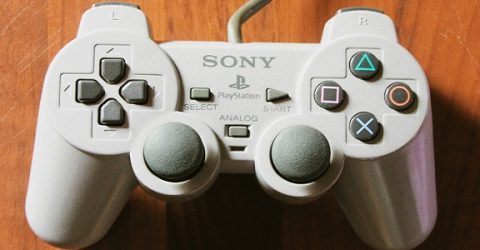How Sony’s PlayStation has evolved since 1995
The history of the PlayStation demonstrates how gaming has evolved over the last 25 years, through a series of significant technological advances

In 1995, the computer games market was in something of a rut.
The 16-bit home computer age (including Commodore’s Amiga and Atari’s ST) was drawing to a close, while their 8-bit antecedents had long since been consigned to landfill.
PCs were still powered by Windows 3.1, Apple’s iMacs were hardly the stuff of gaming dreams, and consoles of the time included the ageing SNES and the unsuccessful Sega Saturn.
Into this moribund market, Sony’s first-generation PlayStation arrived like a hurricane.
Developed after a former collaboration with Nintendo collapsed, the PlayStation (originally known as the SNES-CD) arrived in 1995 and debuted some ground-breaking technologies.
It abolished the floppy disc drives familiar to Amiga and PC users in favour of a CD drive that permitted faster loading and smoother in-game processing.
It offered portable memory cards small enough to fit into a wallet, which could be transported to continue saved gameplay elsewhere.
The hand-held controller was brilliant in its tactile simplicity, with four buttons distinguished by icons rather than letters, and a basic four-way directional pad.
The entire system featured just three visible wires, and even a technophobe could set it up.
Meanwhile, the graphical brilliance of futuristic titles like Wipeout and Grand Theft Auto captivated gamers and non-gamers alike.
As the PS5 takes Sony’s all-conquering games consoles into a new age of cloud gaming, it’s worth considering how the history of the PlayStation reflects the evolution of gaming.
Second class
Five years after the first-generation console emerged, the PS2 wrote a new chapter in the history of the PlayStation.
Larger than the first-generation model (until a slimline version came out in 2004) and designed to stand on end, this rakish machine stayed in production until 2013.
It quickly killed off Sega’s rival Dreamcast, using DVD-ROM discs and rendering up to 75 million polygons per second.
This was also the first PlayStation to support gaming over the internet, with networking ports fitted as standard to the slimline model.
Rule of thirds
In 2006, following a number of delays, the history of the PlayStation expanded to include its difficult third album.
The PS3’s flaws included an unintuitive operating system and a lack of backwards compatibility with PS1 and PS2 games. It was also expensive, and sold relatively poorly.
However, it did offer a Blu-ray drive, impressive HDD storage, Ethernet and HDMI ports, and Bluetooth support for wireless peripherals.
This was ideal for iconic games like Guitar Hero, where a wired connection simply wouldn’t have been practical. The PS3 also offered video on demand, years ahead of wider trends.
Four the many, not the few
With gaps between new models growing ever longer, the fourth-generation PlayStation finally arrived in 2013.
Its design harked back to the original PS2, though its architecture was far from retro. It incorporated a 4K display and a processor capable of performing 1.84 teraflops per second.
Built around social interaction, the PS4 featured remote play (supporting gaming on other devices). It also let friends control the machine remotely.
Despite the growing threat of Microsoft’s Xbox, the PS4 would ultimately become the second-best selling home games console of all time, beaten only by the PS2.
And while it’s now been eclipsed by the PS5, which we recently profiled here, the PS4 is a sophisticated games console even by 2020’s rarefied standards.






